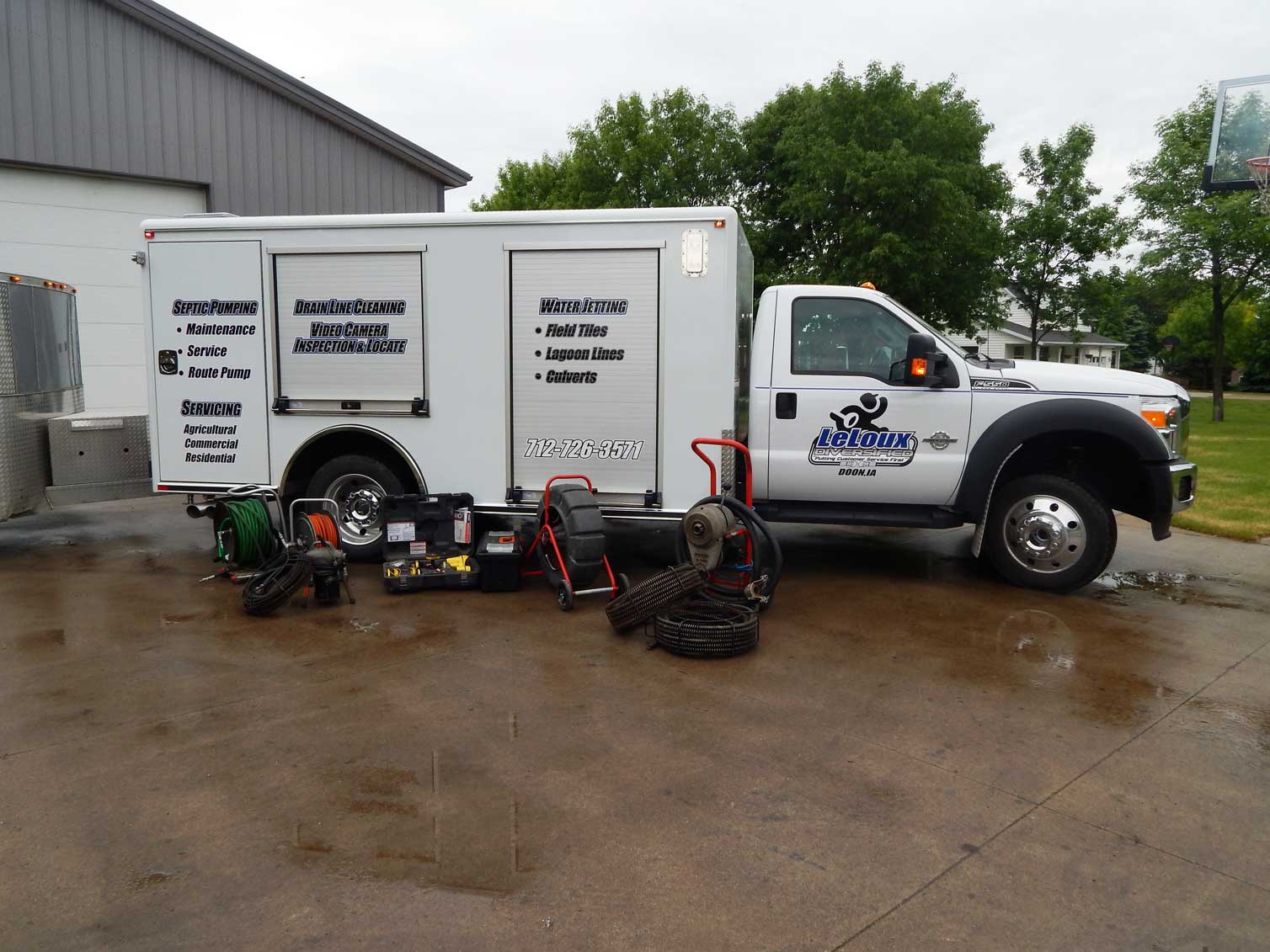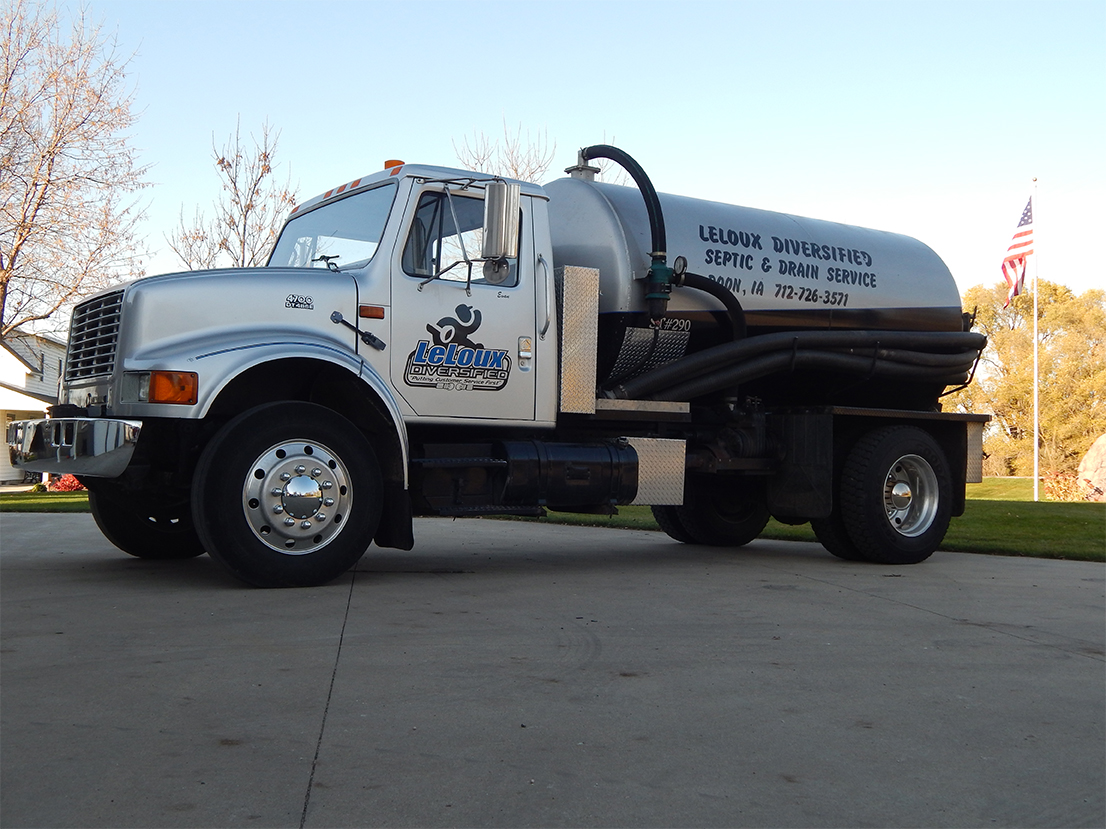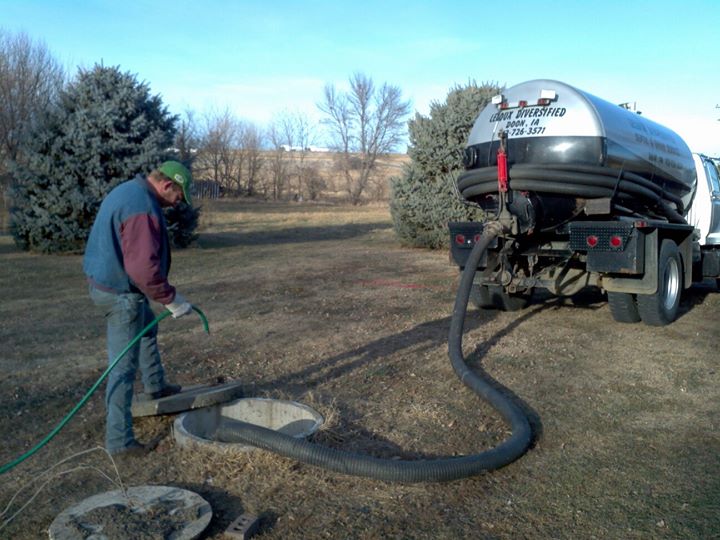712-726-3571
office@lelouxdiversified.com
Frequently Asked Questions
Not sure what we do or how we do it? Read below to find out more about us and our services!
Need more info on Septic Tanks?
How do I know when I have a septic problem?
You may be experiencing backup, gurgling drains, or slow flushing stools. These can be caused by actual blockage, a septic system or drain field in need of maintenance, or something as simple as poor venting or a plugged vent pipe.


How do I keep my septic system working properly?
The best and most economical maintenance for a septic system is to have it pumped on a preventive basis. Please refer to the routes/areas question for further information on signing up for this service.
Do I need a new septic system?
Septic systems may last for many years if being maintained through preventive pumping and filter cleanings. Please contact us for pricing.


How do I sign up for the route?
Our route covers NW Iowa, SE South Dakota, & SW Minnesota. Please contact us for route pricing. Want to sign up for our route? Click on the button below.
Services FAQ
- Septic Pumping
- Water Jetting
- Video Camera Inspection & Locate
- Drainline Cleaning
- Trenchless Pipe Repair
- Grease Trap
Where is my septic tank? Do I have to dig up the cover?
The tank is underground near your house. If you don’t know where it is we have the locate equipment to do that for you. The cover of the tank can be anywhere from 4-6” to 4-6’ underground. Our equipment tells us the depth also. Once it is found, dug up, & pumped it is highly recommended to place risers up to ground level for future maintenance.
When can you service my tank?
Route pumping services are done in the spring before crops (usually between March & May) and in the fall after crops (usually between October & December). Emergency pumping can be done almost any day, pending bad weather. We try to service problem pumping within a day.
How does a septic system work?
When you use water or stools in the house, the waste water flows from the house through a drain pipe and into the tank. When the tank gets full to the outlet pipe, the water flows into the drain field and eventually disperses into the ground.
Why is it necessary to pump the tank?
Pumping your tank removes the slug from the tank before it gets dispersed into the drain field, which can cause permanent damage.
How long should a septic tank go between pumping?
If your system is sized according to DNR regulations you should be able to pump every 3 years. We offer 1, 2, or 3-year route pumping. Click here for our DNR regulation chart.
What does high H2O level mean?
Your drainage field is not draining properly and the water can’t get away.
What if there are puddles around my leach field?
This could be the result of the distribution box not being adjusted properly or several other problems could cause this. Call us for further information.
What is water jetting?
It is the use of high pressure water to remove obstacles from a pipe.
What can it cut through and remove?
It removes tree roots, slug, manure, sand, or ice.
What type and size lines can you do?
We have the equipment to jet a 1” waterline, 4” residential or commercial drain lines, 6-18” drain field, agriculture pit lines, field tiles, or road culverts.
Can you record what you are viewing?
Our camera has the ability to record both DVD video in color & audio.
What size and length pipe can you view?
We have cameras available to view a 1”-8” line, with a 300’ push rod.
Can you locate the problem area with the camera?
When the problem is identified, we will locate where it has to be dug up.
Can you locate my septic tank?
Yes we can and with pin-point accuracy.
What size lines can you open?
We can open 1 ½”-4” lines.
How many feet of cable do you have?
We have the capability to open a 225’ line.
What can you repair?
We can repair 3’-6” lines using 2’-4’ patches.
Why go trenchless?
Do you have landscaping in your yard you don't want to damage? Trenchless pipe repair can repair your pipes without digging up your yard. Because it doesn't dig up your lawn, it can save you money! It can be great for agricultural pipes or otherwise hard to reach places as well.
I want to know more.
Since trenchless pipe repair is a specialized service, we recommend calling for more information. Our main line is 712-726-3571
What is a grease trap?
A grease trap, often used in the food service industry, is a special trap that separates kitchen grease from regular drain water. This keeps grease from clogging drains and allows for proper disposal.
What do you do with grease traps?
We will clean the grease trap and jet the lines for you. This service is great for restaurants who don't want to close in the middle of dinner hour due to lines being clogged by grease.
Do you dispose of the grease afterward?
Yes! We take care of the mess so you don't have to.
Is a route available for this service?
Yes. Route services are available, but only upon request.
Does the machine leave an odor?
No! Oftentimes, jetting the line to clean the pipes/trap can cause an unwanted odor that lingers. Our equipment, however, keeps that odor contained.
